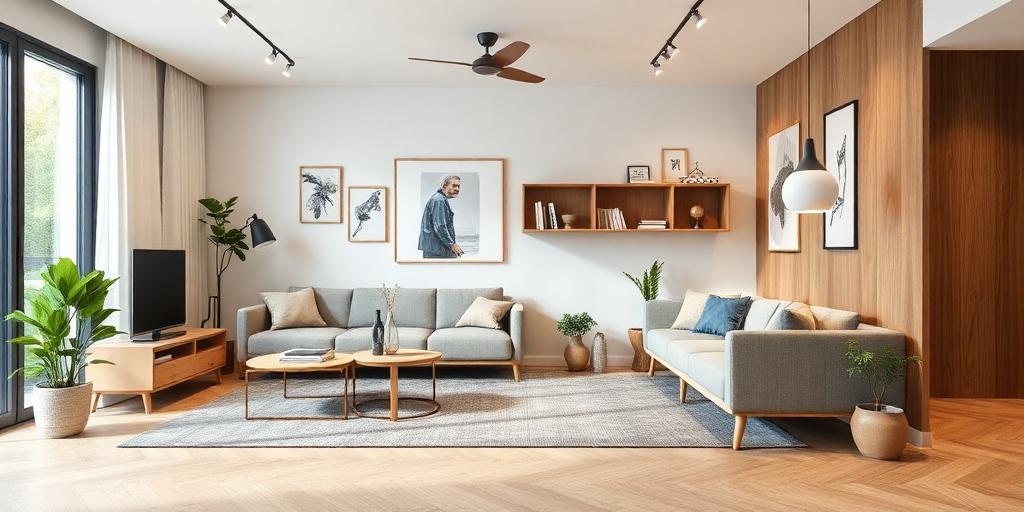In an era defined by rapid technological advancements and evolving societal norms, the concept of "future-proofing" has transcended mere survival and become an essential strategy for thriving. This is particularly relevant in how we design our living spaces and structure our lifestyles. Embracing adaptable lifestyle trends ensures that your home and routines remain functional, sustainable, and enjoyable for years to come.
Understanding Adaptable Living
Adaptable living is about creating environments and habits that can easily adjust to changing circumstances, whether due to technological innovations, economic shifts, or personal life stages. It's a proactive approach that prioritizes flexibility and resilience.
Key Trends in Adaptable Lifestyle Design
Smart Home Integration:
- Integrating smart technology into your home offers unparalleled adaptability. Smart thermostats, lighting systems, security systems, and appliances can be controlled remotely and automated to suit your specific needs. As technology evolves, these systems can be upgraded or reconfigured without requiring major renovations. Consider a modular smart home system that allows you to add or remove components as needed, ensuring your home stays current with the latest innovations. Look for systems that are compatible with multiple platforms to avoid being locked into a single ecosystem.
Multi-Functional Spaces:
- The modern home needs to be versatile. Design spaces that can serve multiple purposes. A guest room can double as a home office, a living room can transform into a yoga studio, and a kitchen island can become a workspace. Furniture that can be easily reconfigured, such as modular sofas, foldable desks, and convertible beds, is crucial. Maximize vertical space with shelves and storage units to keep clutter at bay and maintain flexibility.
Sustainable Living Practices:
- Adopting sustainable practices not only benefits the environment but also enhances the adaptability of your lifestyle. Energy-efficient appliances, solar panels, rainwater harvesting systems, and composting initiatives reduce your environmental footprint and lower your utility bills. Sustainable materials like bamboo, recycled glass, and reclaimed wood are durable, aesthetically pleasing, and reduce reliance on finite resources. Consider investing in a smart energy monitor to track your consumption and identify areas for improvement.
Remote Work and Learning:
- The rise of remote work and online education necessitates creating dedicated spaces for these activities. A well-designed home office should be ergonomic, quiet, and equipped with reliable internet connectivity. Ensure adequate lighting and ventilation to promote productivity and well-being. Consider soundproofing the space to minimize distractions. For families with children, designate a separate learning area that is conducive to studying and creative activities. Portable workstations and room dividers can help create temporary workspaces in shared areas.
Health and Wellness Integration:
- Prioritizing health and wellness at home is essential for long-term well-being. Create spaces that promote physical activity, relaxation, and mental clarity. A home gym, meditation corner, or outdoor garden can enhance your quality of life. Invest in air purifiers, water filters, and ergonomic furniture to minimize environmental stressors. Integrate smart health devices, such as fitness trackers and sleep monitors, to track your progress and make informed decisions about your health. Consider biophilic design principles, which incorporate natural elements like plants and natural light, to create a calming and restorative environment.
Implementing Adaptable Lifestyle Changes
Making your lifestyle more adaptable doesn't require a complete overhaul. Start with small, manageable changes and gradually incorporate new habits and technologies.
- Assess Your Current Needs: Evaluate your current living situation and identify areas that could benefit from increased flexibility or sustainability.
- Prioritize Key Areas: Focus on the areas that will have the most significant impact on your daily life, such as energy efficiency, workspace functionality, or health and wellness.
- Invest in Smart Technology: Research and invest in smart home devices that align with your needs and budget. Ensure they are compatible with existing systems and easy to use.
- Embrace Multi-Functional Design: Look for furniture and décor that can serve multiple purposes and be easily reconfigured.
- Adopt Sustainable Practices: Implement simple sustainable habits, such as recycling, composting, and using energy-efficient appliances.
- Stay Informed: Keep up-to-date with the latest trends and innovations in adaptable living to ensure your home and lifestyle remain future-proof.
Conclusion
Future-proofing your living space is not a one-time task but an ongoing process of adaptation and improvement. By embracing smart technology, multi-functional design, sustainable practices, and health and wellness integration, you can create a home and lifestyle that is resilient, functional, and enjoyable for years to come. As the world continues to evolve, these adaptable trends will ensure that you are well-prepared to thrive in any environment.









